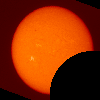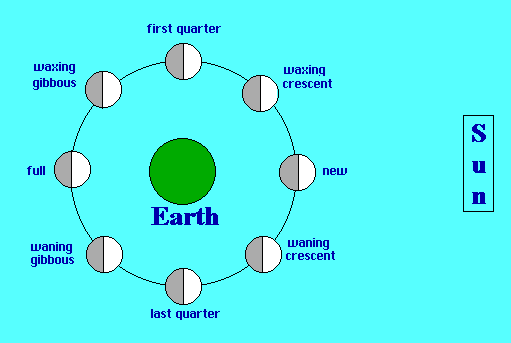The Moon

The moon orbits the earth, taking about a month to complete a revolution. That seems slow, but it is fast enough that if you go outside and look at the moon and then go back the next night at the same time, you will see the moon has moved a noticeable amount. In fact, it moves about 13 degrees in 24 hours. Because it moves in its orbit from west to east, the moon rises about 50 minutes later each night. Don't confuse this west to east orbital motion with the east to west motion during the night due to the earth's rotation.
Phases
As the moon orbits the earth, it seems to change its shape. We call this "going through phases." The moon is not actually changing, though. It only seems that way.
The moon does not produce any light of its own. It simply reflects light from the sun. To understand how this creates phases, look at the diagram below. Here we see the moon's orbit around the earth as we look down on the North Pole. The moon moves counterclockwise in its orbit. Notice that no matter where the moon is in its orbit, the side facing the sun is lighted and the other side is dark. Consult this table as you read about the phases below.
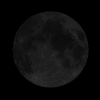
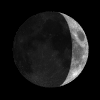
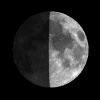
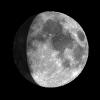

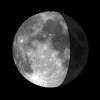
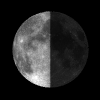

Eclipses
The moon is also responsible for both lunar and solar eclipses.
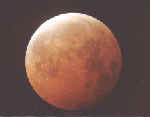
Lunar eclipses occur infrequently. Some years have none, but there can be as many as three in one year.
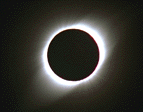 A solar eclipse occurs when the moon passes between the earth and the sun. The sun is about 400 times larger than the moon, but it's also about 400 times farther away. So the son and moon appear the same size in our sky. Therefore, then the moon passes exactly between the erath and moon, the sun's disk is completely covered, allowing us to see the corona, the layer of hot gasses surrounding the sun.
A solar eclipse occurs when the moon passes between the earth and the sun. The sun is about 400 times larger than the moon, but it's also about 400 times farther away. So the son and moon appear the same size in our sky. Therefore, then the moon passes exactly between the erath and moon, the sun's disk is completely covered, allowing us to see the corona, the layer of hot gasses surrounding the sun.
Solar eclipses occur more often than lunar eclipses. There are at least two solar eclipses each year and there can be as many as five, but that's very rare. Unfortunately, a particular solar eclipse can only be seen from a small part of the world. To see a total eclipse, you must somewhere along a narrow, less than 200 mile path. So eclipses are rarely seen from a given location.
